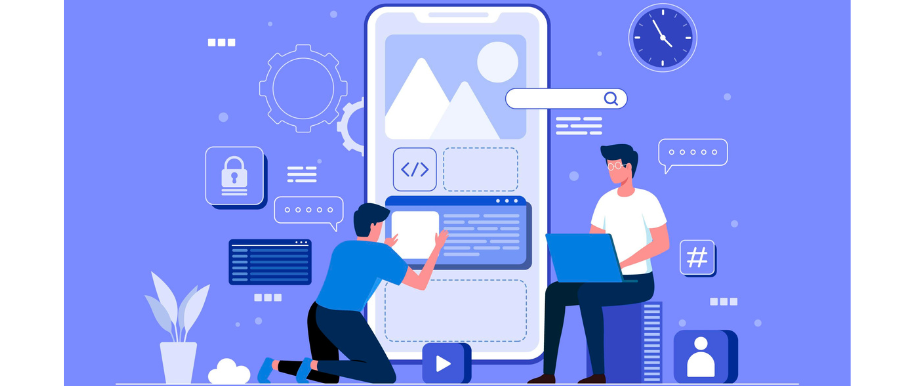Artificial Intelligence (AI) is the buzzword in today’s “exo-technological” world, and why not? After all, it has changed the magnum of many industries. While AI will fundamentally alter many business processes, utilizing its full potential can be time-consuming, expensive, and difficult. Plus, it requires a data science team to construct it and data scientists to use it.
This is why it’s thrilling to see a new wave of no-code AI emerge. No-code AI is a code-free technique that enables non-AI professionals to put their ideas into practice and test them without the help of AI specialists. It equalizes the playing field for businesses of all sizes when it comes to application development by making it more straightforward, quick, economical, and accessible. No-code AI tools and platforms help businesses to create AI and Machine Learning (ML) models without spending a fortune on specialized engineering or data science talent or in-depth coding knowledge, making it a rage in years to come. Don’t believe us? Well, according to Gartner, 65% of all application development will be using no-code/low-code AI platforms by 2024. #AIRevolution
In this blog, we will take you through what makes no-code AI the talk of the town and how it will change traditional application development. Read on!
Why No-Code AI Must Be Used?
Organizations employ no-code AI to deploy AI models that achieve specific business objectives and enhance operations while maximizing the value of their data. Here are some of the top reasons to switch to no-code AI tools or platforms:
- Accessibility and Usability: No-code AI platforms can be quickly incorporated into the current technology stack and put to use. It flaunts features such as personalized dashboards and drag-and-drop user interfaces to help users import data for model training, re-training, or improvement. Anyone within the organization can use plug-and-play to quickly and affordably identify an AI solution to the issue. The joy of joys is these tools are created with keeping non-developers and non-technical users in mind.
- Bridging the Communication gaps: The knowledge gap between domain specialists and AI professionals is still very wide. They seldom ever communicate effectively. In an effort to close the gap, no-code AI platforms give domain experts the chance to test their theories and improve communication with AI experts. Using no-code AI platforms, AI experts may quickly add value for domain experts.
- Speed: Consumers expect speedy delivery and seamless product experiences across channels in today’s oversaturated app industry. No-code AI platforms provide rich functionality and the flexibility to turn projects around in a fraction of the time. The visual interfaces of no-code AI platforms help developers bring products to market more quickly and with fewer problems by bridging the gap between a concept and a usable application.
- Scalability: AI is designed to handle multiple tasks at a time. It doesn’t care if it completes a task for one user or one hundred, and neither do servers that scale up or down automatically based on load. Therefore, no-code AI platforms can handle multiple users simultaneously proving to be a scalable solution.
Suggested Read: How AI and ML are influencing mobile app development
What does No-code AI mean for various industries?
Following are a few industries that are currently leveraging no-code AI platforms to make the most of AI:
- Telecom sector: The capacity of telecommunications businesses to employ AI effectively as soon as possible and create related software will be crucial to their success as they begin their journeys toward digital transformation. No-code AI platforms have helped the telecom industry rethink user experience by creating new opportunities and complicating business models.
- Education sector: Many academic institutions are open to automation’s potential. However, the overall user experience may suffer if there is a lack of uniformity and seamlessness among the different digital platforms used by an organization. With no-code AI tools educational organizations can save all the information for the organization in one place and then spread it to as many platforms and applications as they choose.
- Healthcare sector: In order to improve patient outcomes, modern healthcare technology is raising standards of care everywhere. New developments in no-code AI platforms are upending the healthcare market by helping healthcare practitioners develop apps for clearer communication as well as by improving data collection from health records for advanced predictive modeling.
- Finance sector: Traditional algorithms are no longer sufficient because of the rising scope and complexity of banking. No-code AI platforms help financial teams to control financial risk, streamline procedures, create ML models for a financial application, generate financial reports, automate invoice systems, enhance cybersecurity, and enhance client satisfaction.
Suggested read: How Artificial Intelligence can revolutionize the Healthcare industry
What The Future holds?
Businesses are steadily taking the road to no-code AI platforms. Wondering why? Well, access to developers and software engineers slows project delivery in part owing to the knock-on effects on workforce management, and this is where the technology may bring real value. In coming years, users of no-code AI platforms should be able to express their creativity, establish application requirements, and answer particular inquiries throughout the app development life cycle using Natural Language Processing (NLP). Drag and drop symbols are anticipated to be replaced by NLP bringing about a day when business analysts and solution architects won’t be needed for the conversion of ideas into software.
At Vatsa Solutions, we have helped multiple businesses develop next-gen apps to gain a competitive edge. Talk to us today to learn how we can help you with your digitization needs.







